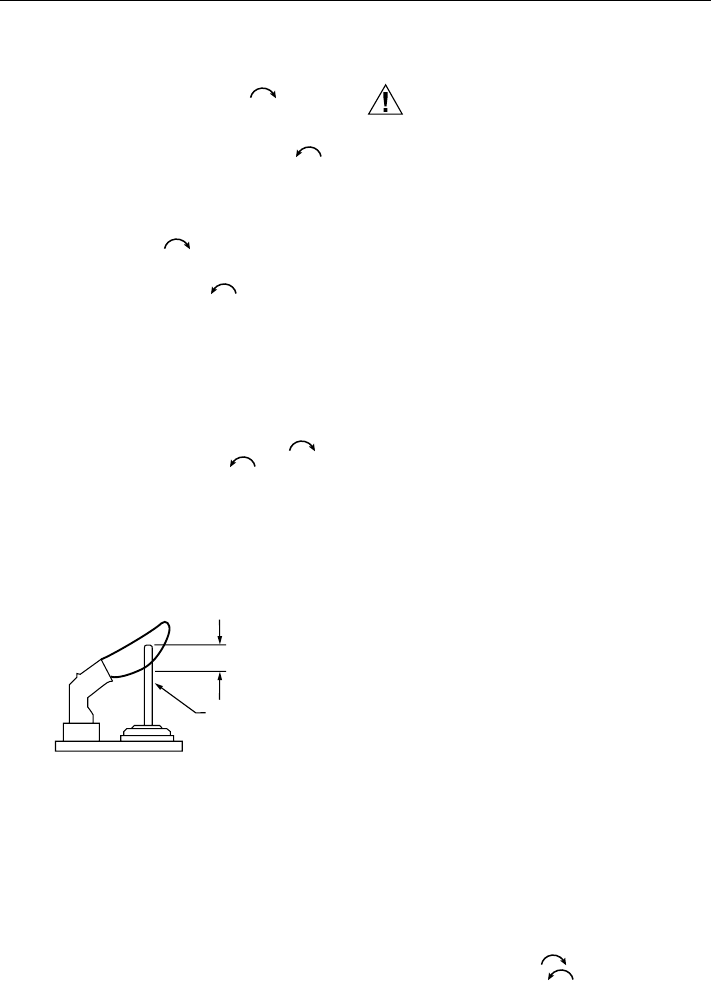
69-0668—1
7
VR8300A CONTINUOUS PILOT COMBINATION GAS CONTROL
Light Pilot Burner Flame
1. Turn the gas control knob clockwise to OFF.
Wait five minutes to dissipate any unburned gas.
Sniff around the appliance near the floor. Do not
relight the pilot flame if you smell gas.
2. Turn the gas control knob counterclockwise
to PILOT. Push down and hold the gas control knob
while lighting the pilot flame.
3. Hold the gas control knob down about one minute,
then release.
a. If the pilot flame goes out, turn the gas control
knob clockwise to OFF and repeat steps
1 through 3.
b. If pilot flame remains lit, turn the gas control
knob counterclockwise to ON.
Adjust Pilot Burner Flame
The pilot flame should envelop 3/8 to 1/2 in. (10 to 13 mm)
of the thermocouple tip. See Fig. 10.
To adjust the pilot flame:
1. Remove the pilot adjustment cover screw.
See Fig. 5.
2. Turn the inner adjustment screw clockwise
to decrease or counterclockwise to increase
the pilot flame.
3. Always replace the cover screw after adjustment
and tighten firmly to ensure proper operation.
Light Main Burner
Follow the appliance manufacturer instructions or set the
thermostat setpoint 10°F (6°C) above the room tempera-
ture to call for heat.
Fig. 10. Proper flame adjustment.
M3086B
PROPER FLAME
ADJUSTMENT
3/8 TO 1/2 IN.
(10 TO 13 MM)
THERMOCOUPLE
Check and Adjust Gas Input to Main Burner
CAUTION
1. Do not exceed the input rating stamped on the
appliance nameplate, or the manufacturer
recommended burner orifice pressure for the
size orifice(s) used. Make sure the main
burner primary air supply is properly adjusted
for complete combustion Follow the instruc-
tions of the appliance manufacturer.
2. IF CHECKING GAS INPUT BY CLOCKING
THE GAS METER:
• Be sure there is no gas flow through the
meter other than that of the appliance
being tested.
• Other appliances must remain off with
pilots extinguished (or the consumptions
must be deducted from the meter reading).
• Convert the flow rate to Btuh as described
in the Gas Controls Handbook, form 70-
2602, and compare to the Btuh input rating
on the appliance nameplate.
3. IF CHECKING GAS INPUT WITH A MANOM-
ETER (PRESSURE GAUGE):
• Make sure the gas control knob is in the
PILOT position before removing the outlet
pressure tap plug to connect the manom-
eter.
• Turn the gas control knob back to PILOT
when removing the manometer and
replacing outlet pressure tap plug.
• Shut off the gas supply at the appliance
service valve or, for LP gas, at the gas tank
before removing the outlet pressure tap
plug, and before disconnecting the
manometer and replacing the outlet
pressure tap plug.
• Perform the Gas Leak Test at the inlet
pressure tap plug.
Standard-Opening and Slow-Opening Pressure
Regulator
1. The gas control outlet pressure should match the
manifold pressure listed on the appliance name-
plate.
2. With the main burner operating, check the gas
control flow rate using the meter clocking method or
check the gas pressure using a manometer con-
nected to the gas control outlet pressure tap. See
Fig. 5.
3. If necessary, adjust the pressure regulator to match
the appliance rating. Refer to Table 7 or 8 for the
factory-set nominal outlet pressures and adjustment
ranges.
a. Remove the pressure regulator adjustment
cap and screw.
b. Use a screwdriver to turn the inner adjustment
screw clockwise to increase or
counterclockwise to decrease the main
burner gas pressure.
c. Always replace the cap screw and tighten
firmly to ensure proper operation.














